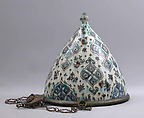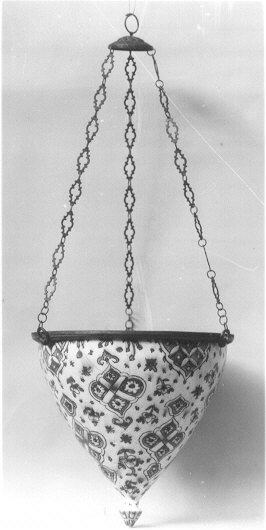Mosque Lamp
Not on view
The Ottoman program for replacing the seventh-century tiles on the exterior of the Dome of the Rock in Jerusalem revived the Syrian ceramics workshops. Afterwards, potters in Damascus continued to create tiles for Ottoman buildings throughout the region and in Istanbul. Although in Syria, potters adopted the floral motifs developed in the main Ottoman ceramics center of Iznik, the range of colors differ from those produced in Anatolia. In Syria, they were unable to produce the characteristic bole-red of Iznik wares, and relied instead on blue, turquoise, and bright green with touches of manganese purple, as seen in this mosque lamp here.
Due to rights restrictions, this image cannot be enlarged, viewed at full screen, or downloaded.
This artwork is meant to be viewed from right to left. Scroll left to view more.




